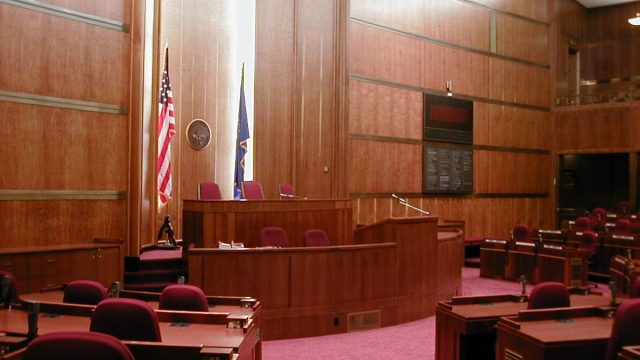The Oil Boom Is Over: Lobbyists Flee North Dakota

North Dakota’s oil boom is over. I don’t think there’s any disputing that fact. That’s not to say that we’re now in for a bust, but certainly the era of almost exponential growth in everything from tax revenues to population (in some areas of the state) is past. Even if oil prices rebound, we’re not likely to go back to the boom era.
But there are other metrics to illustrate that the boom era is over. Like the relationship between the number of lobbyists and bills introduced and the amount of money the state has to spend.
The number of bills introduced so far in the 2015 legislative session is way down from previous bienniums. Though there are still a few days left for lawmakers to submit bills, at this point the bulk of them are in and the decline in bills is startling. During the 2009 legislative session there were 1,021 bills introduced. In the 2015 legislative session, through Friday, there are about 40 percent less, or 617 bills between the two chambers.
House members can’t introduce any more after Monday the 19th, and Senators can introduce only 3 more bills each until their deadline on Monday the 26th. After that all bills must survive the arduous task of introduction through the delayed bills committee, which doesn’t happen often.
The trend for legislation since the 1980’s has been downward, but redistricting in 1990 reduced the number of lawmakers in the chamber. The more recent spike and decline is clearly all about the oil boom. More money to spend, more legislation to spend it.
Now comes another data point. The number of lobbyists participating in the 2015 legislative session is also way down. “Data from the North Dakota Secretary of State’s office show 380 lobbyists representing 709 organizations are registered this year,” reports James McPherson for the Associated Press. “Last session, there were 574 registered lobbyists representing 942 organizations.”
That’s a 33 percent decline in the number of lobbyists from last legislative session, and a 35 percent decline since 2009 (which was also the peak year for bills introduced).
There’s a lot of revenue uncertainty in North Dakota right now. Between declining oil prices, and poorly-conceived tax policy which could trigger oil tax exemptions costing the state billions, nobody really knows just how much the state will have to spend in the next biennium. It’s so bad Democrats (who rather hypocritically opposed fixing the aforementioned tax triggers) have proposed the creation of an alternate budget to be used should revenues take a hit.
All that has combined to make the state a lot less interesting for lobbyists.






